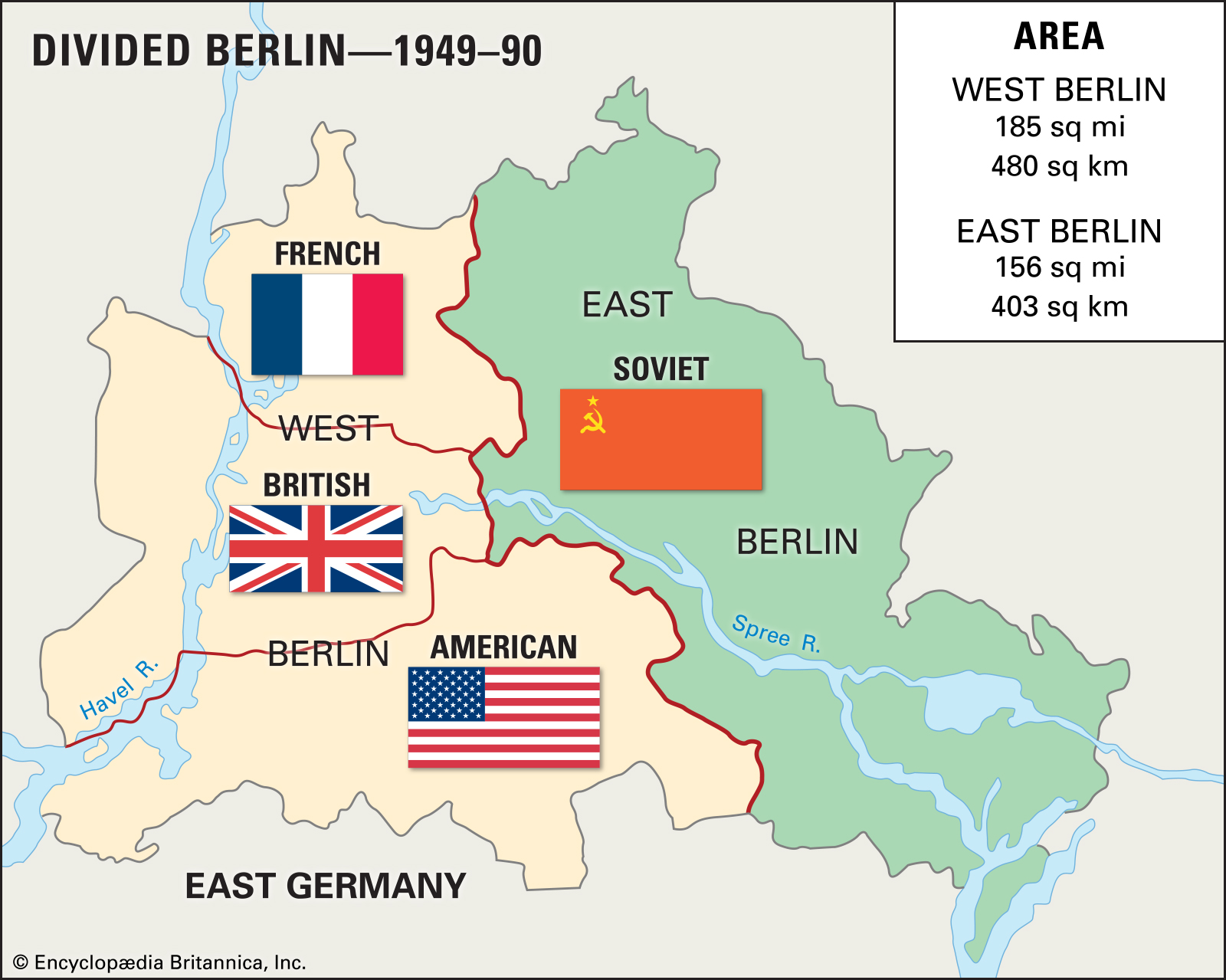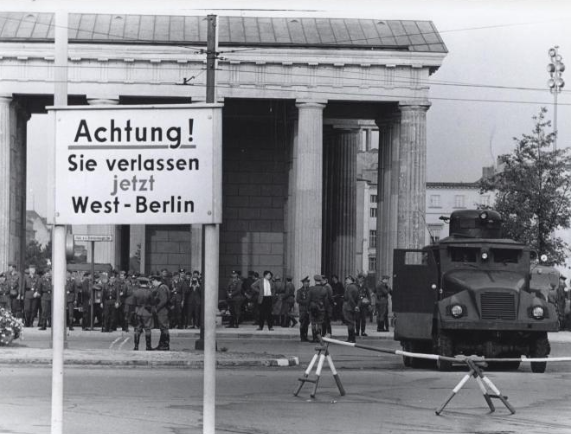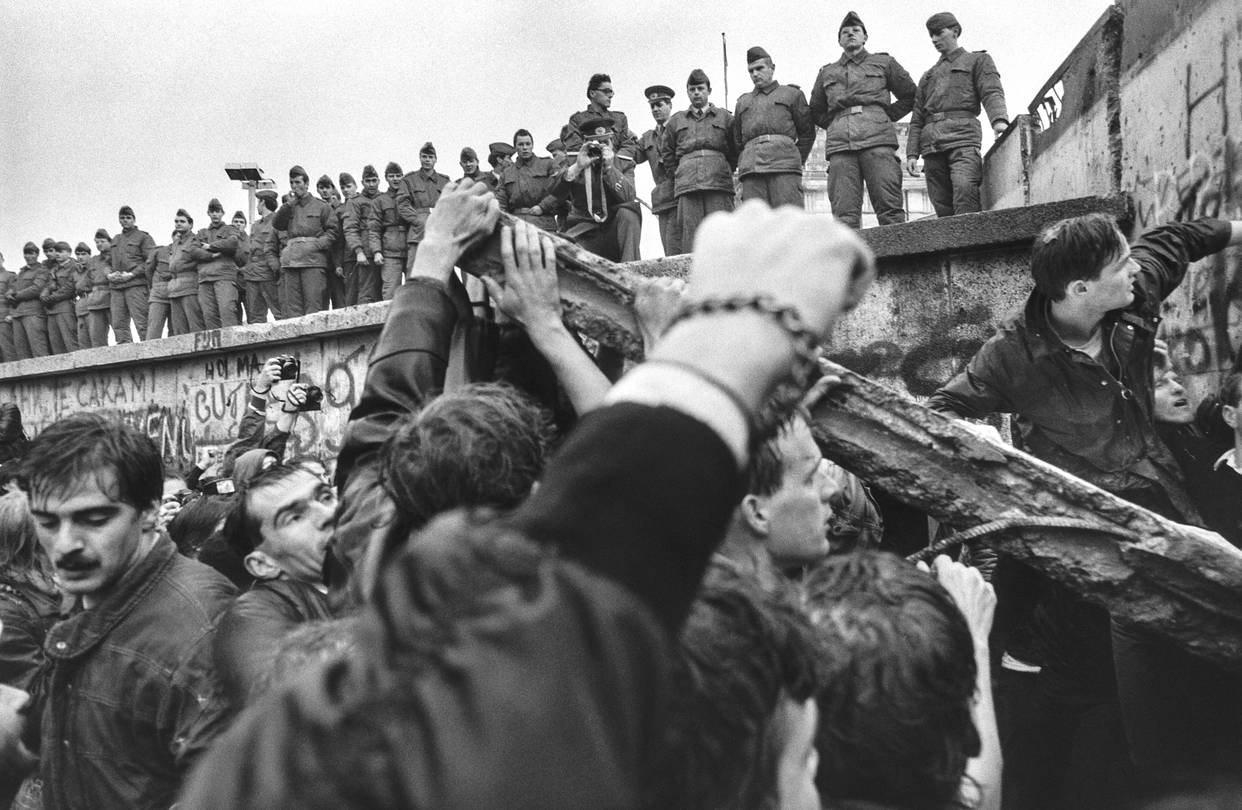Background Information
WWII
After the Germans lost WWII, Germany was divided up between the allies: The United States, England, France, and The Soviet Union. In 1948 and 1949, tension arose between the Soviets, who controlled the East, and the other three countries, who had merged their territories into one Western economic zone, and created a new currency - the Deutsche Mark. The Soviets were against the new changes.

Map of the divided sectors of Berlin. Brittanica, Encyclopedia. “Cold War Berlin.” Map of Cold War Berlin, Encyclopedia Britannica, Jan 2020

East Berlin police block the Brandenburg gate. August 1961, Corkran, Lee, National Archives
The Berlin Blockade
Upon news of the new currency, the Soviets created a blockade, cutting all supply lines to Berlin. This caused shortages of food, coal, and electricity. On June 24, 1948, the Soviets withdrew from the Four Power Agreement. The United States began providing food and supplies using airlifts, which continued into 1949. Another war seemed possible. Due to the new currency and shortages in the East, people fled to the West. This caused the Soviets to increase border control.
The Berlin Wall
During the twelve years after the blockade, over two million East German citizens escaped to the West. On August 12, 1961, East Germany began securing entry points to the West with barbed wire and sentries. By August 23, 1961, the wall was secure and the East German government had put an end to most hopes of escape. Upon completion of the wall, people rioted throughout East Germany, especially in Berlin. There were only two entries to East Berlin: Checkpoint Charlie and Checkpoint Bravo. Both were heavily guarded, and getting through was no easy task. Even US officials were harassed at these checkpoints.

West Germans break a section of the wall. Nov. 11, 1989. JEAN-CLAUDE COUTAUSSE/CONTACT PRESS IMAGES